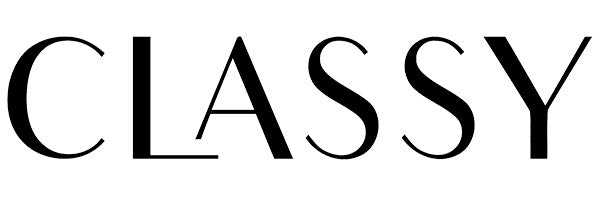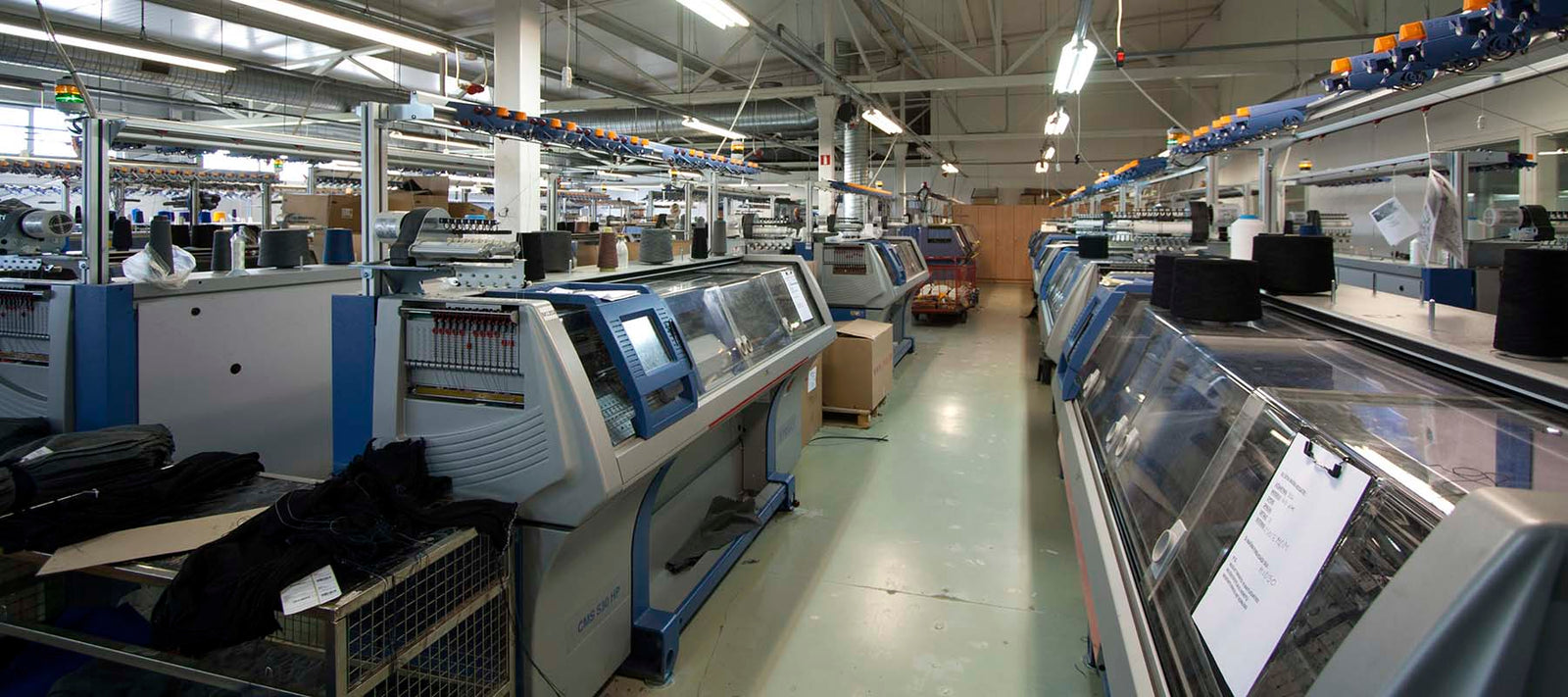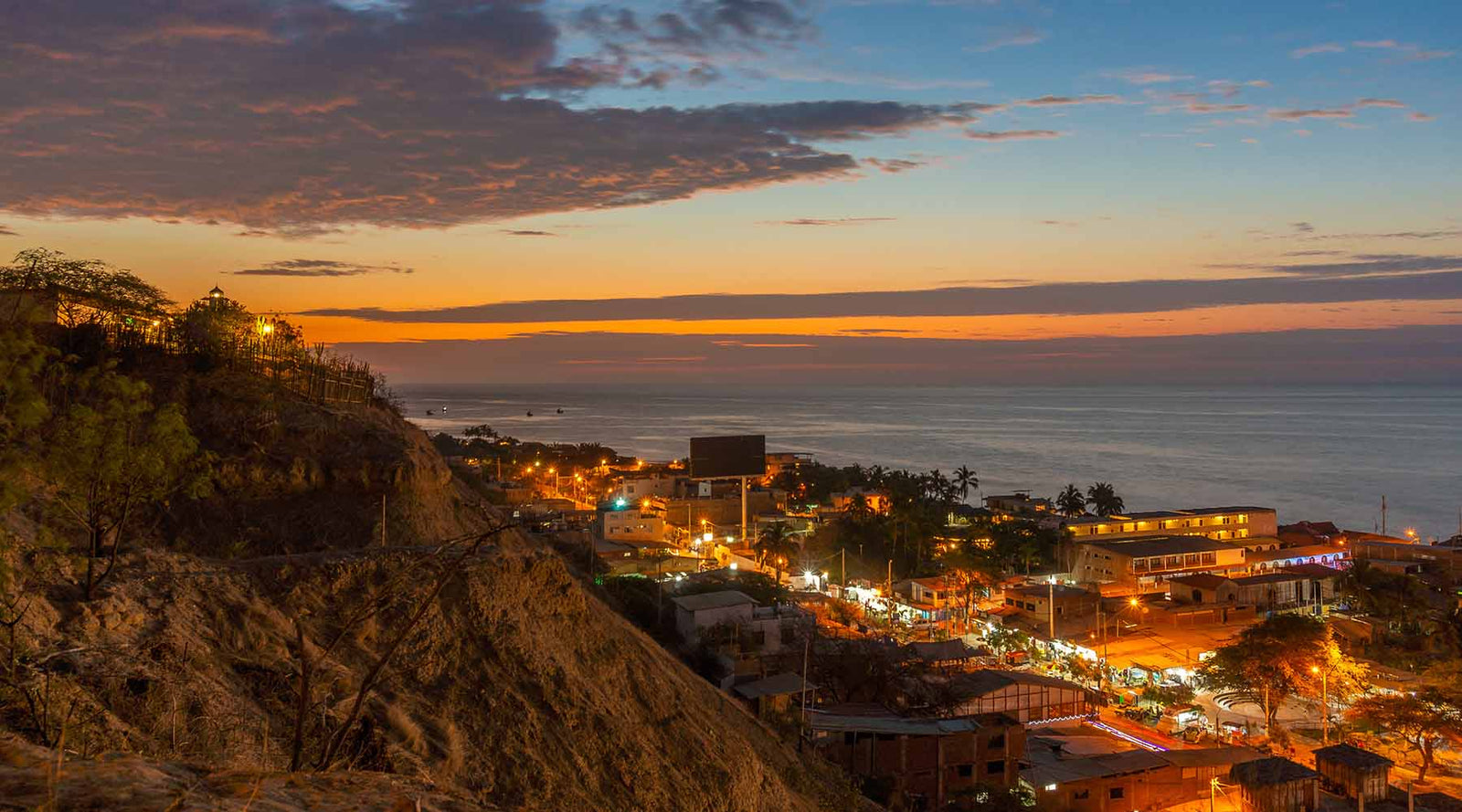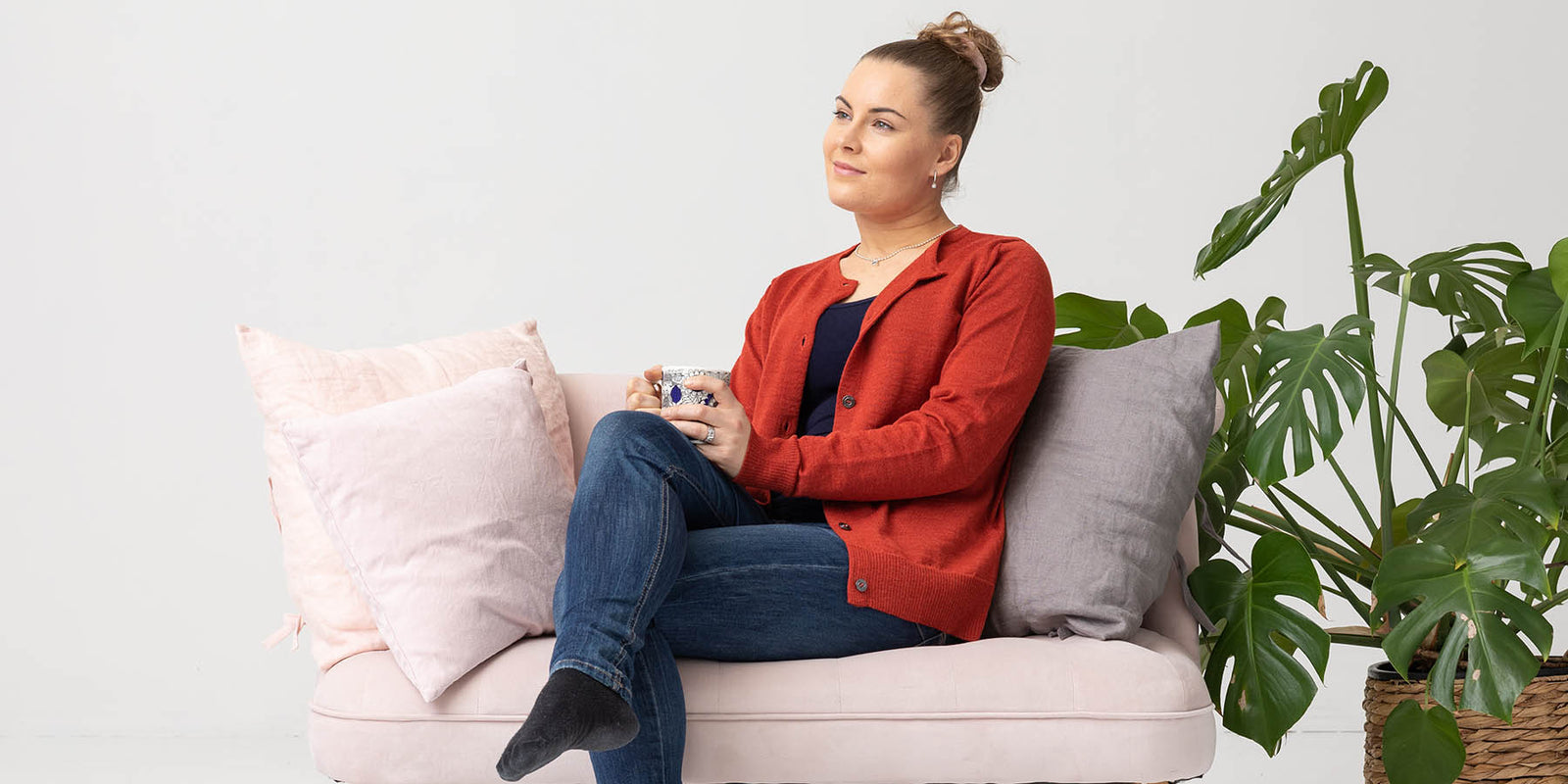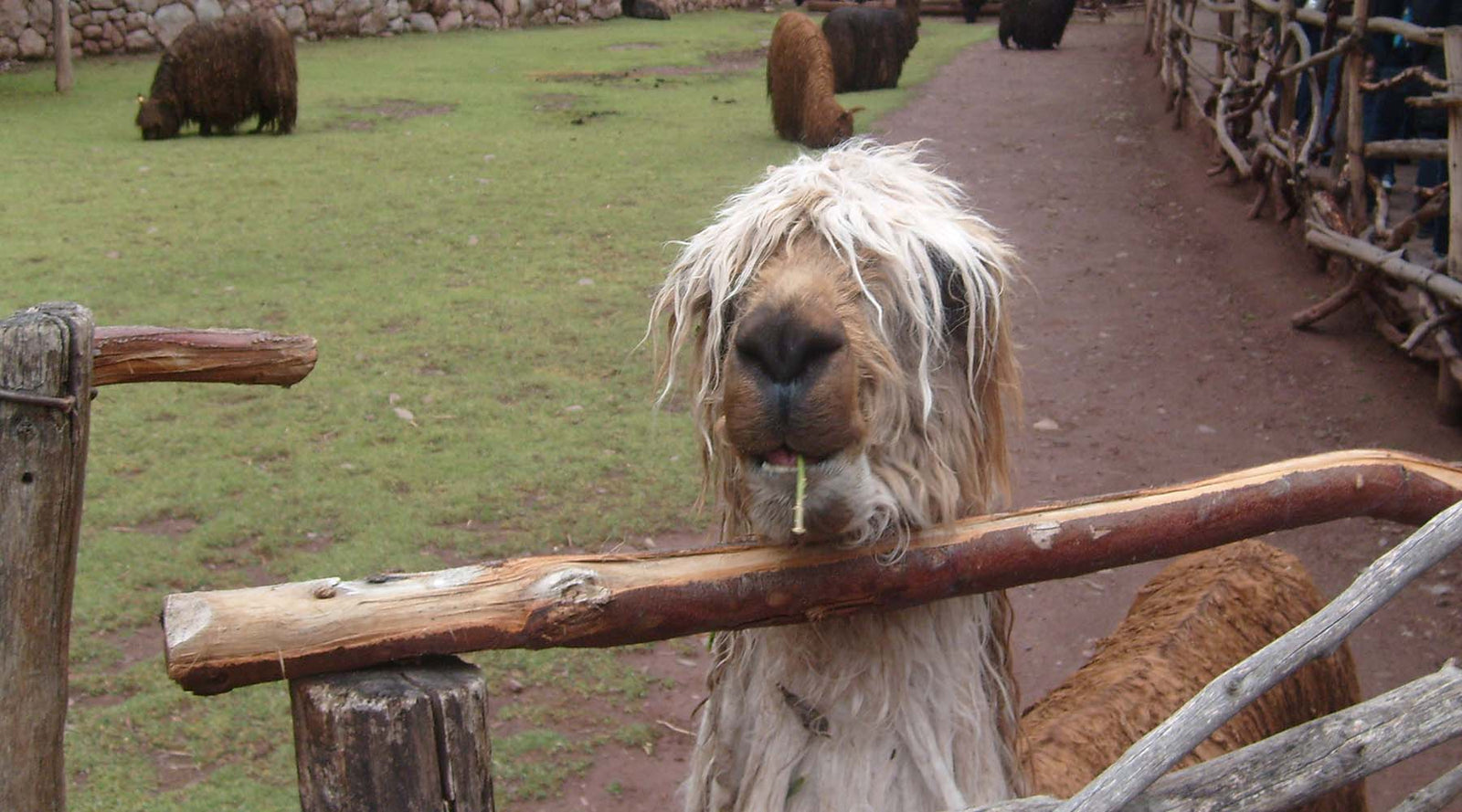Several brands and online retailers talk about responsibility and advertise their responsibility. So does Classy, at least in a small way, on its page about alpaca. But what is that responsibility? And is Classy really responsible? To some extent, the matter was clarified when we tried to become a seller on Weecos.com, that marketplace for responsible design brands. Sure, we passed their accountability survey. But let's find out a little more!
In Finland, Eetti (Pro Ethical Trade Finland) has been studying the responsibility of Finnish clothing brands for several years in its Rank a Brand studies. There are really many brands, from fairly small fashion operators to very large ones in Finnish terms, and even to the own clothing brands of large retail chains. The little ones did better than the big ones. Classy has not been included, and is certainly too small to be in that group for now.
The Finnish study was conducted using the Dutch Rank a Brand NGO's criteria for clothing brands. When Eetti does his research, scoring is simple - if the answer is positive and clear, the result is 1 point, if negative or unclear, the result is 0 points. The information must be found on the brand's website or otherwise easily, explanations via e-mail will not help.
Here's a look at how Classy works with this same breakdown. Would Classy get points? What would be the biggest and/or easiest flaws to fix? Let this blog post be the starting point for Classy's planned responsibility work.
Classy climate measures
The criteria gives a maximum of 6 points for this point. The review includes carbon footprint, climate work and climate goals.

Carbon footprint of own operations
Classy has not calculated or published the carbon footprint of its own operations. However, it could be done with reasonable effort, as we have some experience in calculating another company's carbon footprint. In some respects, estimates would have to be used.
0 for this now, 1 point in the future.
Electricity from renewable resources over 50% / 100%
The main office of the family business is the family home, which currently has plenty of space. Product deliveries and other daily operations take place there. The electricity used is so-called basic electricity, of which only 29% is produced by renewable energy sources. The rest are made with nuclear power or fossil fuels. This is an easily fixable issue. Classy's actual warehouse is in the center of Muurame. There, electricity is included in the rent. The electricity consumption of the space is almost non-existent, because the lights are rarely kept on, only when the products are replenished, or a new shipment is taken there.
0 for this now, 1 point in the future.
Carbon footprint of the supply chain
Classy has not calculated or disclosed the carbon footprint of its supply chain. The biggest impact is certainly yarn production and freight. Garlita, our knitting company in Lithuania, uses its own solar energy, so their carbon footprint is small. As a whole, however, a significant carbon footprint is created in the production chain, and it would be good to find out its amount, and certainly possible to find out. However, it requires work.
0 for this now, possibly 1 point in the future.
Reducing the carbon footprint of the supply chain
With Classy, the carbon footprint of the production chain can only be directly affected by the choice of transport method. In other respects, the measures should be taken by the supplier or service provider.
0 for this now, possibly 0 in the future.
The goal is climate neutrality
By compensating, this can be easily achieved even immediately, so you dare to make such a promise. Therefore, Classy will be carbon neutral in its own operations by 2025. To get to this, you must first start calculating your carbon footprint.
1 point for this.
All in all, we would get only 1 point from the section now, but in the future, with reasonable work, up to 4 points.
Classy's environmental actions
It is possible to get 12 points for environmental actions. Under review are the responsibility of raw materials, the ban on the use of harmful chemicals and its monitoring, packaging materials and the waste footprint, as well as actions related to extending the life cycle of clothes.

Recommended raw materials over 25% / 50% / 90%
The 100% alpaca used by Classy is not on Rank a Brand's list of recommended materials, which is a bit strange. After all, their cultivation is very natural and sustainable. For example, organic cotton seems to be suitable, although there are also problems with its production.
We think alpaca is an excellent material, and also responsibly produced, and that's why we're not changing it. Other materials may come along with it sometimes, time will tell how the plans come true.
0 points for this, and there won't be any more in the near future. So three points lost!
Recycled raw materials over 25% / 90%
Classy does not use recycled materials. The possibilities of using the yarn ends of the cones left over from production, as well as the dismantled yarns, are currently being studied as part of the thesis. However, the proportion of products manufactured in this way cannot increase very much, as very little waste of this kind is produced.
0 points for this, and there won't be any more in the near future.
The policy to remove hazardous chemicals from the production process
The yarns used by Classy are Oeko-Tex 100 certified, so there is a policy for them and a list of prohibited dangerous chemicals is certainly available. Chemicals are not needed in knitting, and otherwise production in Finland and Lithuania is safe.
There is no information on the chemicals used in the production of buttons and zippers, but their share of the total weight of the products is vanishingly small.
0 for this now, 1 point in the future.
Elimination of at least one / at least three suspected groups of chemicals
See the previous one.
0 for this now, 1 point in the future.
Packaging materials
The double bags we use when mailing products to customers are made of double kraft paper, and are therefore recyclable. They also withstand being reused when returning products, when it is necessary, or in some other shipment.
The sweaters are packed at the factory in thin polyethylene bags, which are necessary to protect the product during their transportation and storage. The plastic bag protects against moisture and prevents textile pests from getting into the sweater. There is no way in sight to get rid of these bags.
There is no report required in the criteria, but it can be done.
0 for this now, 1 point in the future.
Waste material footprint
The calculation of the footprint of waste materials has not yet been done. However, all packaging materials are tried to be reused, if only because of its cost-reducing effect. Materials that cannot be used or that are not needed are recycled. Most of these are cardboard and wooden pallets.
The possibilities of using yarn ends left over from production, as well as dismantled yarns, are currently being studied as part of the thesis. They do not go to waste, because it is a rare and expensive material that deserves the use it deserves.
Knitwear is mainly made by knitting the pieces into shape and joining them directly to each other, so there is not much cutting waste. As long as it is born, the knitters will take care of it.
0 for this now, possibly 1 point in the future.
Promoting slow fashion and reuse
Slow fashion and the slogan "Buy less, buy better" have been Classy's principles from the very beginning.
Classy does not have the extended customer warranty, repair and maintenance service, product take back or sale of used products mentioned in the evaluation criteria. These should be considered. Taking back the products will start as soon as a further use can be found for the material in them, e.g. by felting.
Instead, there are treatment instructions. Repair instructions could still be added to it.
The opening of the price structure cannot be found on Classy's website, but it could easily be done for some products, for example. The pricing structure of the products varies, but it is roughly the same as the tax-free price of the product
- raw materials and supplies 20%
- work and knitting freight 20%
- brand share 20%
- marketing and sales 40%
The size charts are in the online store separately for each product.
1 point for this now, 2 points in the future.
All in all, we would get only 1 point from the section now, but in the future, with reasonable work, we could get 6 points.
Working life and human rights
You can get 11 points from the section if the human rights of the production and their control in the entire value chain are in order

Grievance Mechanism for Factory Workers
There is no verification policy. Its implementation and ensuring practical operation could be very difficult, or even impossible.
0 points for this, and there won't be any more in the near future.
List of direct suppliers
The list has not been published, but one can be made.
All yarns used by Classy are supplied by Peruvian Inca Tops. All the sweaters, headbands and some beanies are made by Garlita from Lithuania, and some beanies by Nevil from Finland. Previously, the sweaters were made in another Finnish knitting factory, but this had to be abandoned due to availability problems. Woven scarves are made by Peruvian MFH Knits.
For small accessories, the product labels are supplied by the Finnish company Tuotenauha, the zippers come from Estonia's Coats Eesti, and the buttons are supplied by the Chinese Miracle Trims. The price tags are supplied by the Finnish Kirjapaino Kari. Other printed products are made in-house.
0 for this now, 1 point in the future.
Open supplier list
This does not exist yet, but it can be done if/when the necessary information is obtained from the suppliers.
0 for this now, 1 point in the future.
Extension of supplier list further down the supply chain
This doesn't exist yet, but it can be done. In practice, Peruvian companies have other companies of the same group as suppliers, e.g. for threads used in scarves. There are no other significant second-tier suppliers.
0 for this now, 1 point in the future.
Purchases from certified manufacturers 25% / 50% / 70%
All knitting work is done in low-risk countries, Finland and Lithuania, so in that respect the matter is already in order according to the legislation of these countries. Knitwear accounts for more than 90% of Classy's purchases.
This is probably already 3 points, and the same in the future.
Working conditions policy for suppliers of semi-finished products
Such a policy or its reporting has not been done, and it might be exceedingly inconvenient to do so.
0 points for this, and there won't be any more in the near future.
A commitment to a living wage
There is no such public commitment, but it could certainly be done. As far as Finland and Lithuania are concerned, there is certainly no problem. But in practice, it is very difficult to find out the salary level of Peruvian suppliers, or even to find out what the salary level is really enough to live on at any given time.
0 points for this, and there won't be any more in the near future.
Aim to pay a living wage
See the previous one.
0 points for this, and there won't be any more in the near future.
Purchasing policies
It is in Classy's interest to favor long-term cooperative relationships with its suppliers, and concentrate orders on them. This has not been published as a policy, but it can certainly be done.
0 for this now, 1 point in the future.
All in all, the section would get 3 points now, but in the future, with reasonable work, 7 points could be obtained.
Summary
If we would need a positive and clear answer to get a point in the evaluation, we still wouldn't get very many points. Possibly, however, a total of five. Points would be accumulated from all sections, both climate measures and environmental measures, as well as issues related to working life and human rights.
Instead, by reasonably easily recording the current operating procedures and policies, and developing the operation, approximately 17 points could be obtained, which would already be a good result. With that, you could already reach the B category on the E to A scale.
However, in relation to responsibility, in studies like this, the requirements are constantly increasing, as is right. Therefore, planned responsibility work should start right away, and try to fix those things that can be fixed the fastest. Then you can look further ahead. And if you ever run out of points in the Rank a Brand criteria, other, even broader criteria are available.
We will make a responsibility report for 2022 at the beginning of 2023. We'll see what the situation is then.
